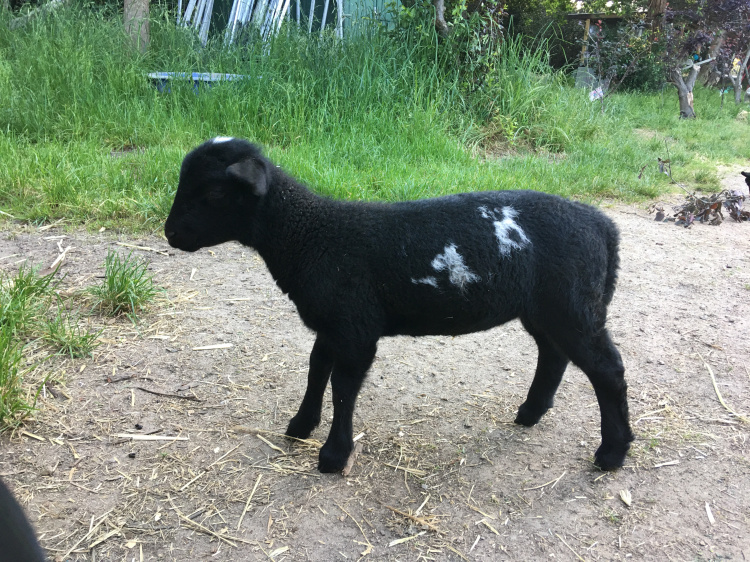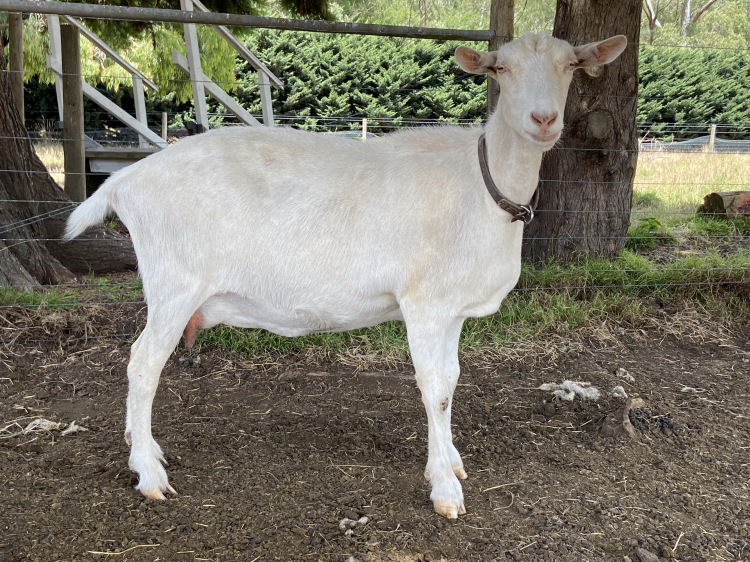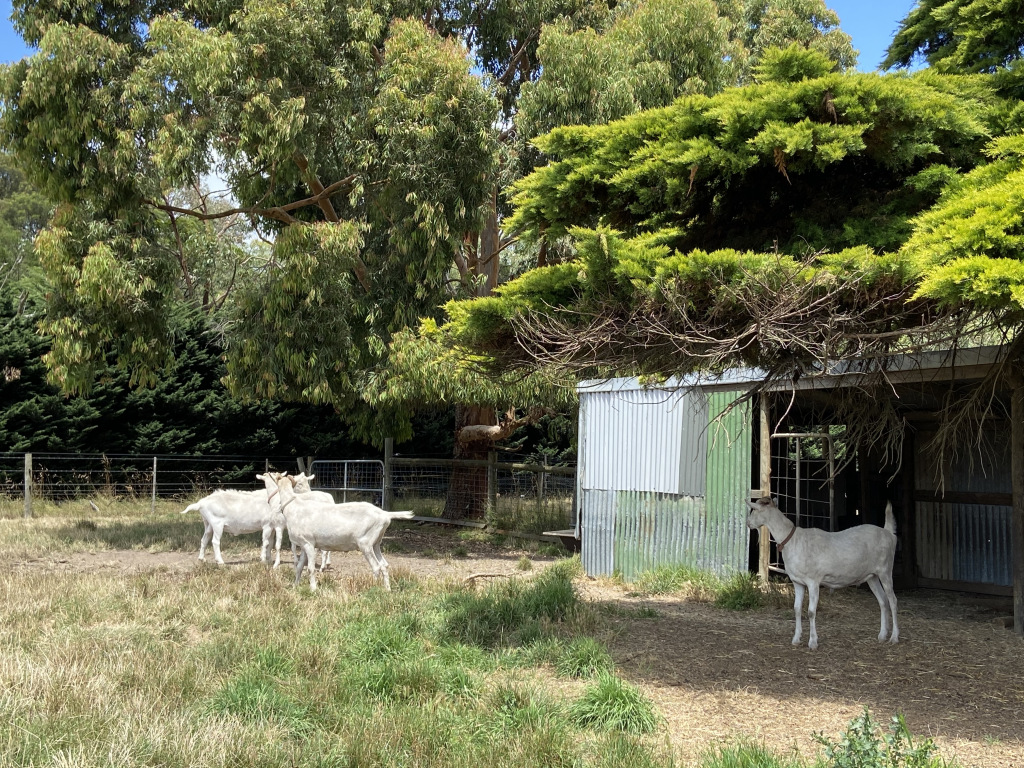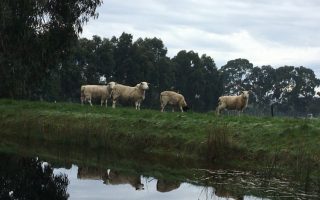There have been so many times I have been told someone has bought goats to be a ‘lawnmower’ on their vacant land or paddocks, only for them to be disappointed down the track when the grass remains long and uneaten.
So what are the main differences between goats and sheep from a small acreage owner’s perspective? Let’s start with their names.
Terminology
Male goats are known as BUCKS, female goats as DOES, and baby goats as KIDS.
Male sheep are known as RAMS, female sheep as EWES, and baby sheep as LAMBS.
Neutered male goats and sheep are both known as WETHERS.
Physical characteristics
Tails
Generally, the easiest way to tell a goat from a sheep is to look at the shape and orientation of the tail. Sheep naturally have long, downward-hanging tails that are usually docked (removed) when they are still very young. Goats on the other hand, have short, outward-pointing tails.


Coat
Goats tend to have hair whilst sheep have wool. Having said that, some goats are bred for their long hair, such as cashmere or mohair and require shearing to collect it. And of course, there are some sheep that are now favoured by some small farmers or meat breeders because they shed their wool when the weather gets warmer. Confusing huh!
Mouth
Sheep have a little separation in their top lip known as the philtrum. Goat’s top lips are not divided.


Horns
Almost all goats are genetically predisposed to develop horns. There is no one specific breed of goat that is naturally polled (grows without horns), although there may be individuals within a species that may be polled. This is usually inherited from a parent. Generally polled goats are not mated to each other, as there is an increased risk of producing hermaphrodite offspring. Horns on goats tend to be less curly and more upright than those seen on sheep.
Sheep can be either horned or polled – for example Dorset sheep will have horns whereas Poll Dorset will not. The horns usually grow to curl around the side of the head.
Beards
All adult goats will have a beard. Beards on Does and Wethers tend to be small and just under the chin – no longer than 6 inches. Bucks have big, long beards that grow from the side of their faces. This facial growth has been described to me as being ‘majestic’, and of course as a goat lover and breeder I agree entirely!
No sheep have beards.
Shape and size
Goats are generally taller, slimmer and longer than sheep. This is especially true of the dairy varieties of goat. The kids start off lean at birth and will initially deposit fat around their internal organs. Lambs will deposit external fat first as they grow, around their backs, loins and ribs. They tend to look much rounder in shape than kids of the same age.
Dairy goats are much taller than fleece or meat breed goats and have a slimmer overall shape.


Behaviour
Feeding
Goats obviously have a bad reputation for eating everything they can get their mouths around, but this actually isn’t the case unless they are starving.
The natural foraging behaviour and diet selection for goats is that they are browsers. This means they tend to look up for their food source – think tree leaves – rather than down. This constant action of looking around means they do tend to be more inquisitive than sheep. If they eat grass they will not eat below 6 inches.
Sheep are known as grazers. This means they will eat grass all the way down to the ground, so they spend a large portion of the day with their heads down.


Agility
Goats tend to be more agile than sheep, so they can be harder to handle and house than sheep. A lone goat will go through, under or over a fence or gate to find company, but sheep are less able to manage the ‘over’ part, so if your fences or gates are tall enough this may prevent them from escaping. Of course you could just make sure they have a friend in which case in which case they will be most unlikely to try to leave you!
Defensive
Bucks and rams have very different defensive or fighting behaviours.
A buck will rear up on his back legs (a full sized dairy goat’s head will be well above my meagre 155cm height!) and then land back down to bang into his opponent’s head with the force of his weight behind him.
A ram on the other hand will back right up, lower his head, and run at his opponent to meet him head on.
The video above shows typical ram defensive/dominant behaviour. Sid (with the black head) backs up then runs forward with his head down. If his opponent had been another entire ram and not a wether, the fight would have been more impressive!
So who would win if a ram fights a buck?
Well the buck will rear up and look impressive whilst the ram will back up and run forwards to butt him right in the tummy. That brings the buck back down to earth pretty quickly, and not feeling all that awesome either.
The actions of either animal can flatten a human if you are not careful. Never take your eyes off a buck or a ram, even if you think you know him and he is friendly. It is much easier to deal with either situation as the animal is preparing to butt you, it is much harder to deal with once you are down on the ground or injured.
Reproductive
One thing you should know…
Goats are so much smellier and noisier than sheep when it comes to declaring their physical readiness to mate!
A doe in season will yell and scream for at least 24 hours, wagging her tail frequently, and trying to get to anything she conceives could help her to get pregnant. After her fertile window has passed, she will show no interest in a buck at all, and if he tries to mount her she will butt him. Bucks have an unfortunate reputation for smelling bad and for good reason! They have scent glands behind their horns which release a musky smell during mating season. They also urinate on their faces and the back of their front legs, to enhance their ability to attract a mate. It looks horrible, smells worse and can cause weeping sores on some animals if they overdo their urine application.
Rams have none of these smelly attributes thank goodness! The ewes don’t make as much noise letting everyone know they are ready to procreate. The downside to this is as a novice breeder it can be harder to pick the signs that your ewe might be ready to have a visit with her intended. Most of the signs in a ready ewe are physiological rather than behavioural, although they will be more inclined to seek out the company of the ram if there is one nearby.
Classification
Both animals belong to the Kingdom Animalia, Phylum Chordata, Class Mammalia, Order Artiodactyla, Family Bovidae, Subfamily Caprinae.
This means they are mammalian animals with cloven hooves, ruminant digestive systems, and are mostly of a medium size.
However sheep belong to the Ovis aries genus and have 54 chromosomes, whilst goats belong to the Capra aegagrus hircus genus and have 60 chromosomes.
This difference in chromosome number means that even if mating were to occur between the opposite sex of one of each species of animal, the incorrect pairing of chromosomes during initial fertilisation generally leads to non-viable embryos. The few documented cases of verified live birth ‘geep’ (goat x sheep), indicate that they are mostly infertile, with 57 chromosomes.
In Conclusion
There are many more differences between sheep and goats, but these are the main ones. Please try to remember that the dietary requirements of sheep and goats may differ depending on resources, sex, age, and reproductive state. Some diseases may affect both animal types, some will affect only one.
Please also remember that I have used photos of my own animals – there are many other different varieties of sheep and goats, each bred for different purposes, that may look or behave slightly differently.
If you are seriously considering acquiring sheep or goats for your property, talk to a livestock owner about the pros and cons of each before making your purchase, and think very carefully about the purpose of the animals you wish to buy.




